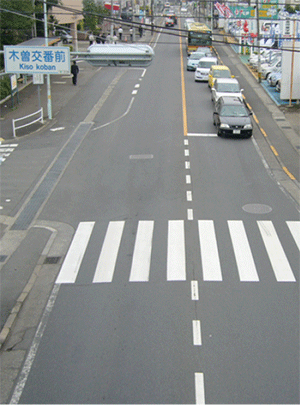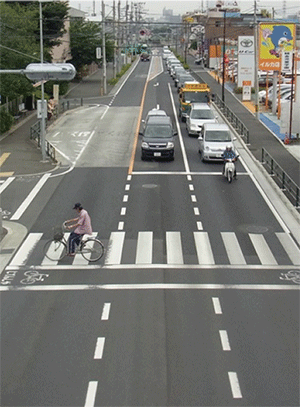Traffic Safety Measures and Easing Congestion
Development of Traffic Safety Facilities
Sidewalks
-
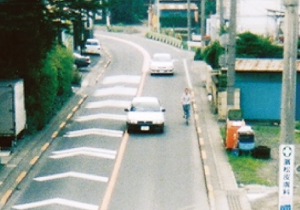 Before
Before -
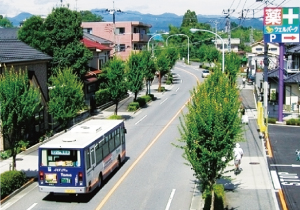 After
After
(Tomoda-machi, City of Ome)
Roads Barrier-free
To secure space for pedestrians where anyone, including the elderly and disabled, can pass safely and comfortably, the Bureau is working to make roads barrier-free when constructing new roads, widening, or repairing existing metropolitan roads.
Additionally, efforts to make roads barrier-free are advancing with a focus on metropolitan roads that link railway stations, hospitals, and other public facilities used by many residents, including the elderly and disabled, on a daily basis. Upgrades to sidewalks include the elimination of uneven surfaces and steps, improvement of slopes, and installation of tactile paving to guide the vision impaired.

Creation of Space for Bicycles
Bicycles are an important mode of transportation widely used by Tokyo residents for everyday activities, including shopping, commuting to school or work, and recreation, and usage is growing.
In light of this trend, the Bureau is working to create roads that enable pedestrians, bicycles, and cars to pass safely and with peace of mind. To that end, the Bureau is working with road administrators to advance the development of space for bicycles by setting up bike lanes using roadways, creating structural and visual barriers to divide wide sidewalks, and other measures.

Road Signs
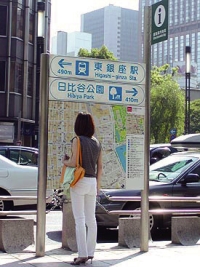
Traffic congestion countermeasures
The Second Suisui Intersection Plan
Mainly in the Tama area, the TMG is creating right turn lanes by acquiring land along two-lane roads in order to ease traffic congestion generated by cars waiting to turn. At intersections where the plan has been implemented, the length of traffic jams and the time needed to pass through the intersection has been shortened. In addition, by also developing the sidewalk in the area of the intersection, safety measures for pedestrians and bicyclists are put into place. As both are very localized measures, the effects can be produced in a relatively short amount of time for a small investment.
Hyper-smooth Campaign
(Traffic congestion countermeasures that effectively use existing roads)
In working toward elimination of chronic traffic congestion in Tokyo, ongoing development of the road network is essential. However, from the perspective of fast-acting results, the Bureau is advancing with traffic congestion countermeasures that make use of existing road space. Coordinating with other related TMG bureaus, the Metropolitan Police Department, and the Ministry of Land, Infrastructure, Transport and Tourism for an eight-year period starting in fiscal 2008, the Bureau is working to facilitate the smooth flow of traffic using a combination of both hard and soft measures tailored to each individual location on thirty sections of road with the worst congestion, mainly in the ward area. Measures include the creation or extension of left and right turn lanes, improvement of road facilities through changes to pavement markings, cargo handling measures, and the use of ITS technology (Intelligent Transportation Systems).
Operation of Parking Facilities
In order to maintain the functionality of roads and ensure the smooth flow of traffic, the TMG operates metropolitan parking facilities at six locations (capable of accommodating 1,245 vehicles), including the Yaesu and Showa-dori underground parking facilities, contributing to the prevention of on-street parking.
Furthermore, the TMG is devising plans for effective use of facilities at all six locations, including the introduction of the designated administrator system which enables operations to be entrusted to approved organization.



